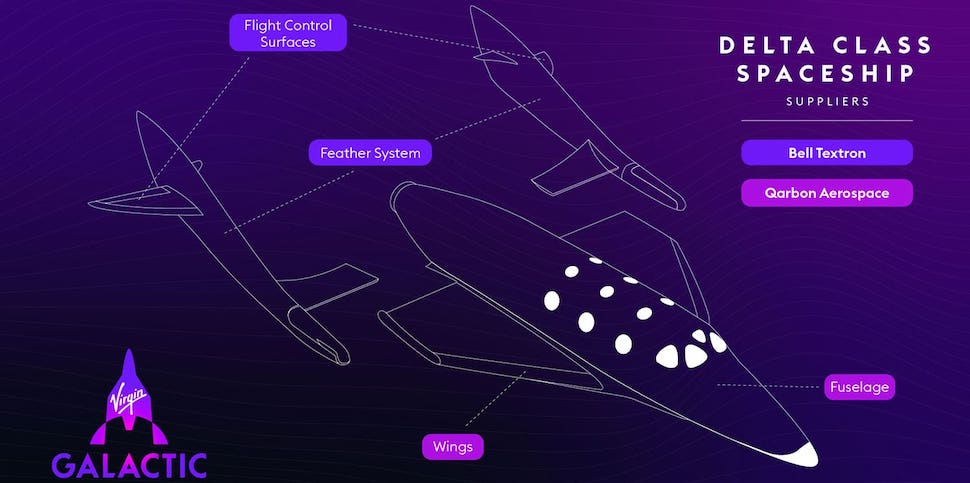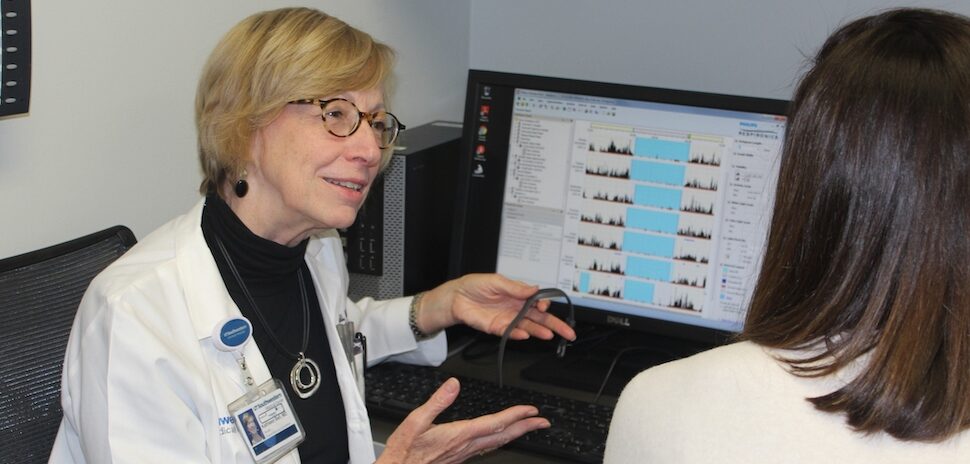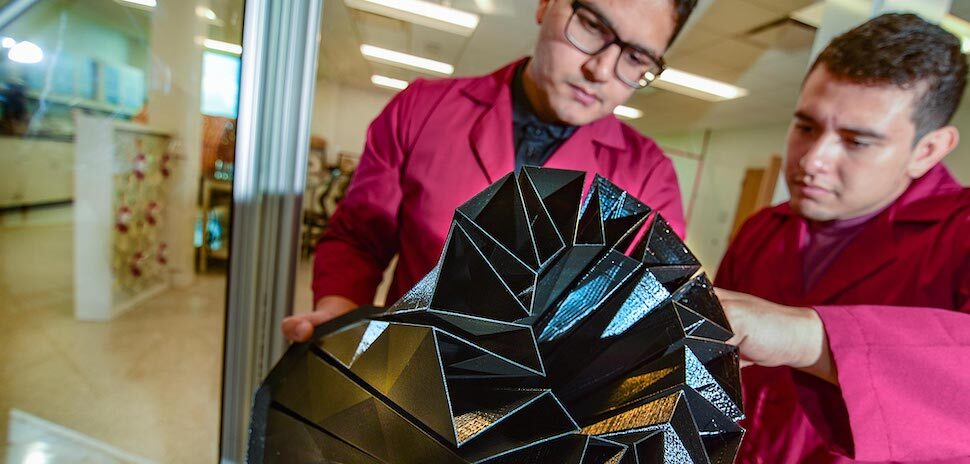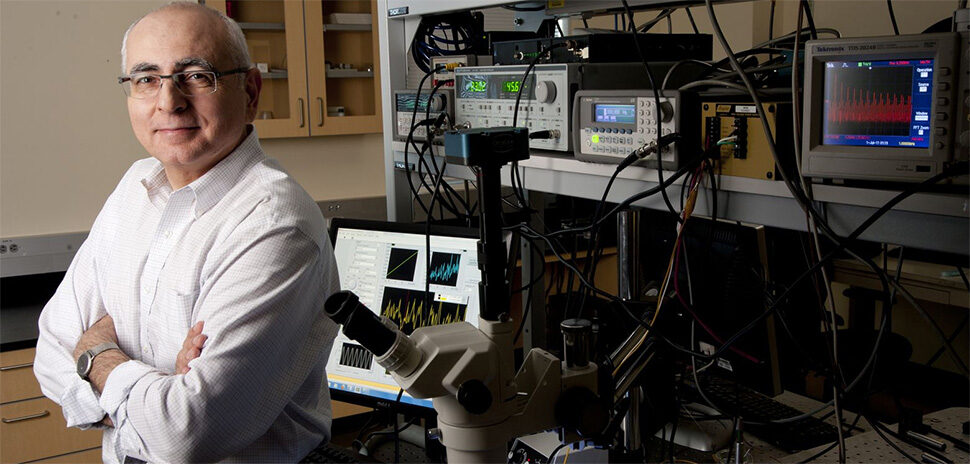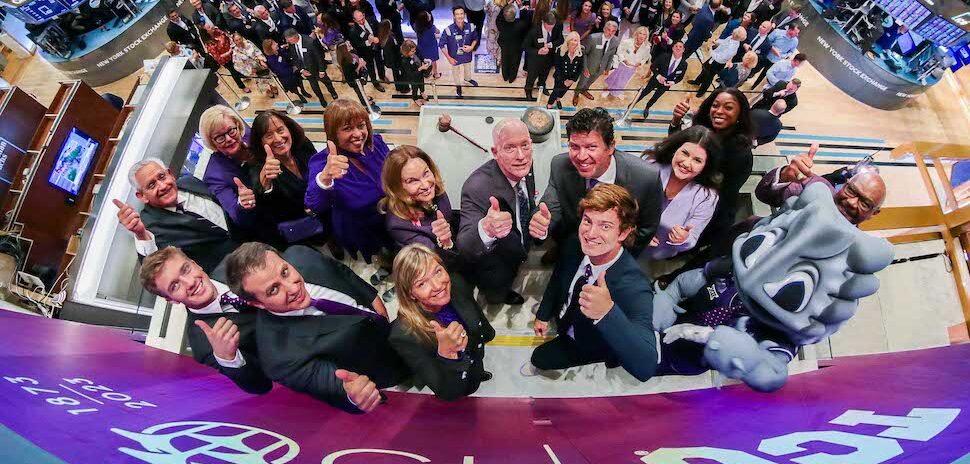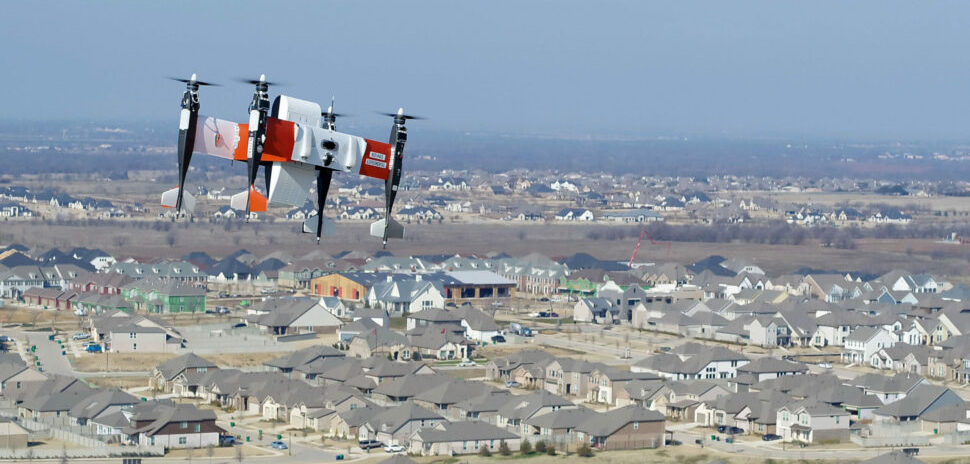Virgin Galactic is gearing up to make its space tourism dreams an everyday reality—and it’s named two Dallas-Fort Worth companies as primary suppliers to help achieve it.
Fort Worth-based Bell and Red Oak’s Qarbon Aerospace will manufacture major subassemblies for Virgin’s next-generation Delta class spaceships, the company announced Wednesday. The production-model vehicles are designed to fly weekly with six passengers per ship, with production slated to begin next year.
Bell, a subsidiary of Textron Inc., will supply the spaceship’s novel feathering system and flight control surfaces.
Qarbon Aerospace, known for constructing complex composite parts for vehicles like LIFT’s Hexa eVTOL flying cars, will will produce the fuselage and wing.
The two DFW companies were selected following a competitive RFP process, “based on their ability to meet Virgin Galactic’s unique design and fabrication requirements,” Virgin said.
Virgin Galactic will continue to be responsible for the overall system architecture of the Delta class spaceships, with design authority for all components and final assembly, integration, checkout, and acceptance testing. The spaceships will be assembled at Virgin Galactic’s new facility in Arizona.
Bringing ‘know-how, ideas, and resources’ to the project
“Bell and Qarbon Aerospace are established partners who bring know-how, ideas, and resources that will enable us to produce up to six new Delta class ships per year,” Virgin Galactic CEO Michael Colglazier said in a statement. “Together with Aurora Flight Sciences, [which] is producing our next gen motherships, we now have the primary suppliers in place to propel the production of our spaceline fleet at scale.”
Glenn Isbell, VP of prototyping and testing at Bell, said his company is honored to be part of the program.
“Bell’s 85-year legacy consists of revolutionary advancements in vertical lift and space technology,” Isbell said in the statement, “and we’re thrilled to make this exciting return to space vehicle development to help bring Virgin Galactic’s vision to life.”
Qarbon Aerospace CEO Pete Wick said his company will be playing “a critical role in this cutting-edge technology platform taking passenger spaceflight to the next level. This is the beginning of what I know is going to be a long and extremely successful partnership.”
First payload flights expected in 2025
The first Delta class spaceships are expected to begin revenue-generating payload flights in late 2025, Virgin said, with private astronaut flights not slated until 2026.
To help make those deadlines, Virgin Galactic has invested in digital twin technology. President Swami Iyer says Delta class spaceship construction will benefit from the tech’s enabling of “seamless integration, real-time collaboration, strong governance, and increased production efficiency and reliability.”
Billionaire Richard Branson reached sub-orbital space in the VSS Unity
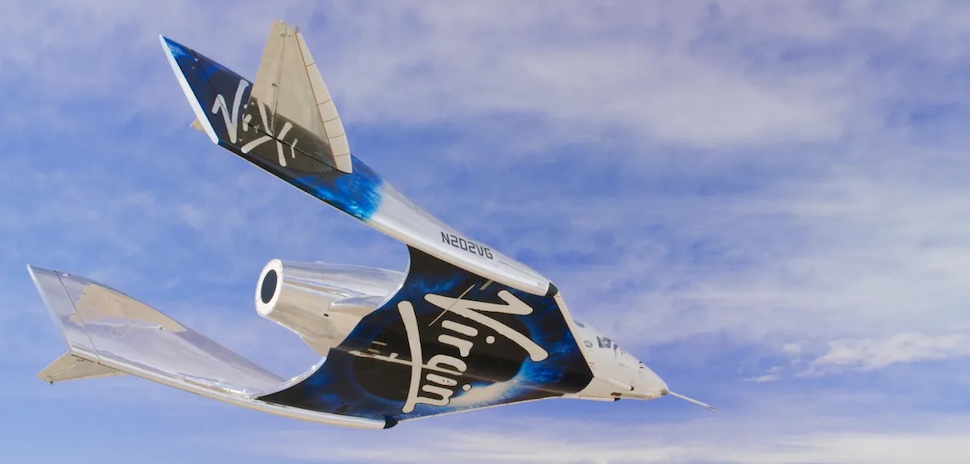
SpaceShipTwo Unity [Photo: Virgin Galactic]
The Delta class spaceships will follow on the heels of other vehicles Virgin Galactic has already rolled out.
On July 11, 2021, Virgin Galactic founder Richard Branson and five crewmates briefly launched into space in Virgin Galactic’s SpaceShipTwo Unity spaceplane. The four passenger and two pilots experienced around four minutes of weightlessness during the flight, which took off from Virgin’s Spaceport America launch complex in New Mexico.
Virgin Galactic unveiled the VSS Imagine last year
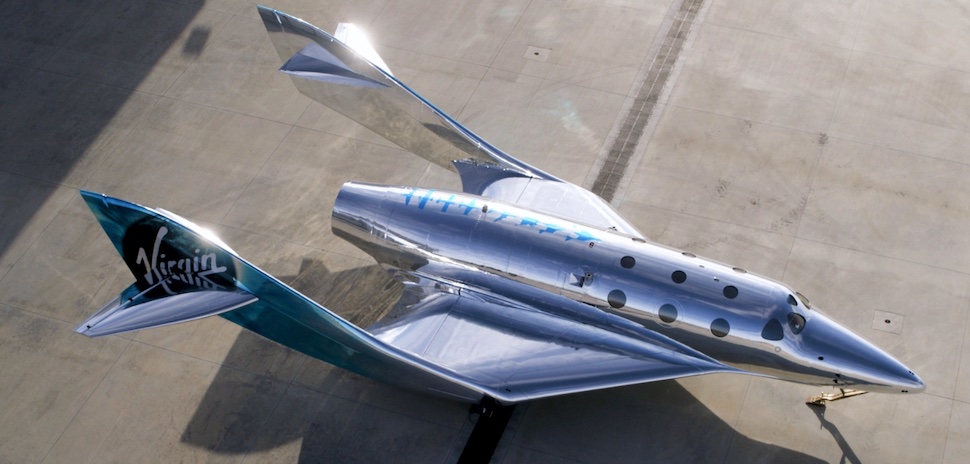
Virgin Galactic VSS Imagine Spaceship. [Image: Virgin Galactic]
In March 2021, the company unveiled SpaceShipThree, the VSS Imagine, above. Finished entirely with a mirror-like thermal protection material, its color and appearance will be able to change as the craft reflects its surroundings from earth to sky to space.
Featuring a modular design, the SpaceShipThree class was built to enable improved flight performance and maintenance access, Virgin said last year. It laid the foundation for the design and manufacture of future vehicles, including the Delta class that Bell Textron and Qarbon Aerospace will be working on.
![]()
Get on the list.
Dallas Innovates, every day.
Sign up to keep your eye on what’s new and next in Dallas-Fort Worth, every day.










